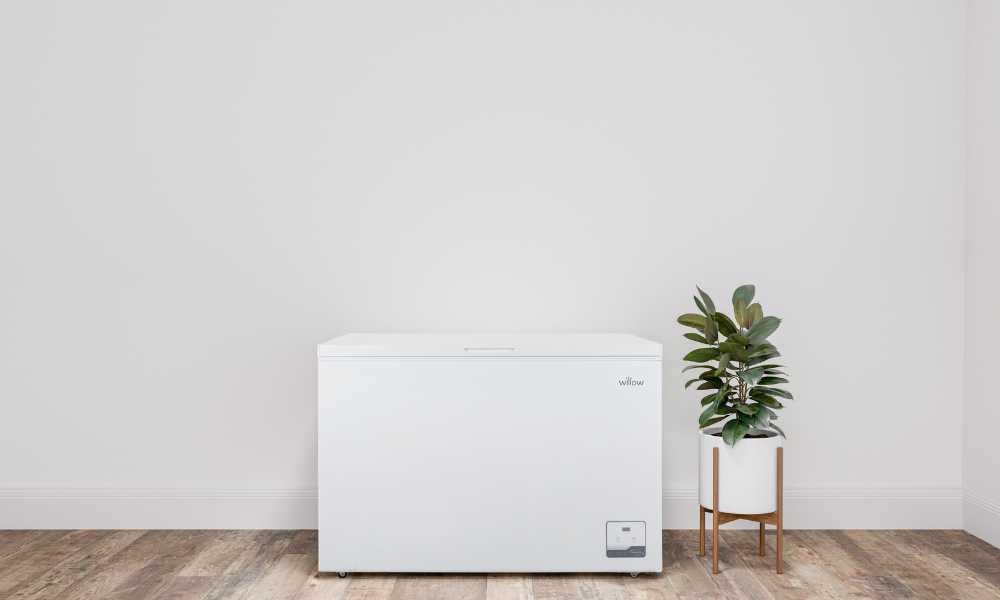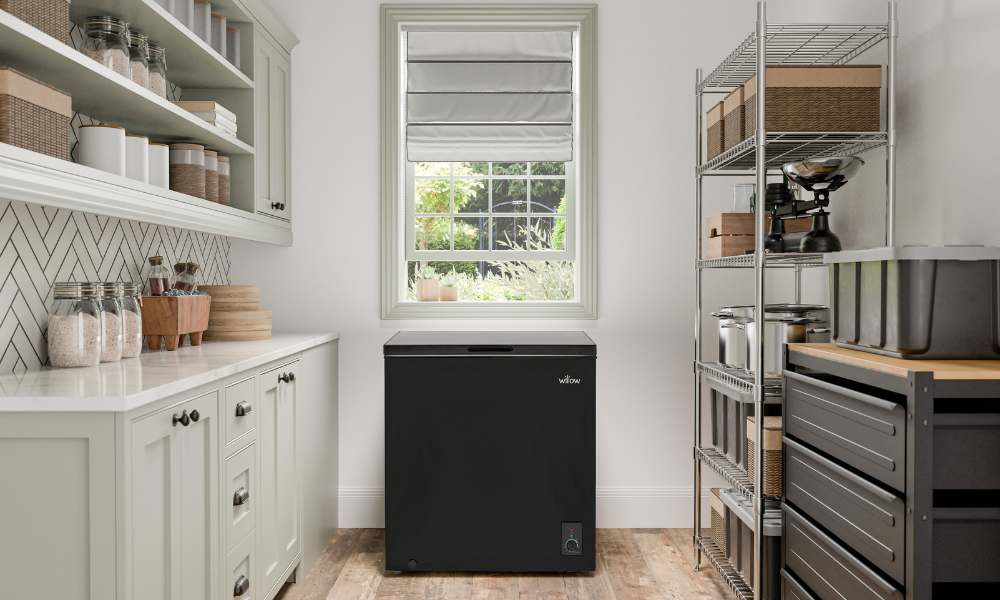Everything you need to know about chest freezers
Chest freezers have become a staple appliance in many UK households. Whether you're a large family needing extra freezer space or you're looking to save money, chest freezers are a great investment.
What are the benefits?
If you haven't already invested in one and you need convincing, here are some great reasons to buy a chest freezer:
Large Storage Capacity - If you like to buy in bulk or meal prep, then you will need more storage than the average fridge freezer can offer you. A chest freezer maximises storage space and is also the perfect solution for larger households. Willow chest freezers come in a range of sizes, starting as small as mini chest freezers with a capacity of 51L all the way up to large chest freezers with a capacity of 400L.
Store Large Items - Upright freezers and standard fridge freezers may have decent freezing capacity, but you are limited in what you can store in them. Standard freezer drawers are often quite limiting and you're not able to store bulkier items such as big cuts of meat or large storage containers. Chest freezers have one big cavity, allowing you to store these larger items with ease. Many also come with removable storage baskets, so you can organise the space and place smaller items in the baskets within easy reach.
Cost-Effective - Compared to tall freezers, chest freezers are generally cheaper to run. This is due to them typically needing to be manually defrosted. The lack of automatic defrost cycles uses a lot less energy than tall freezers that are low frost. Less energy is used to maintain a consistent temperature inside a chest freezer because they have airtight seals. These airtight seals and the design of the door opening upwards means that very little cold air escapes when the door is opened. There is also less surface area compared to an upright freezer.
Where would you store a chest freezer?
As chest freezers have doors that open upwards, they are not suitable for storing underneath kitchen counters. You need to ensure that you have the right space for one - they will take up more floor space than an upright freezer with their horizontal designs. Chest freezers are often wider than they are tall. If you don't have the space in your kitchen, then you can explore other options such as pantries, garages or outbuildings. Most chest freezers can be kept in garages.
It is important to note that freezers can stop working if the ambient temperature becomes too low or too high. You must always check your user manual to determine whether the environment and temperature is right for your chest freezer. It must also be kept out of direct sunlight and placed away from any heat sources such as radiators, cookers or boilers and must have sufficient space around it. All freezers require decent airflow to ensure that the heat dissipates properly and it works efficiently. If they are placed to close to a heat source then the motor will have to work harder to maintain the correct temperature. This can affect both the efficiency and the lifespan of your chest freezer.

How often do you need to defrost a freezer?
As chest freezers don't come with an automatic defrost cycle, they will need to be manually defrosted. It is recommended that any manual defrost freezers are defrosted at least once a year. However, if you notice that the ice that has accumulated inside the freezer has reached a thickness of around 1/4 inch, then that is a sign that it needs to be defrosted. Whenever you open your freezer door, outside air enters the appliance and this allows heat and moisture in. Over time, this moisture becomes frost and will build up on the inside walls of the freezer. With proper use, your freezer shouldn't be accumulating too much ice and you should only need to defrost a chest freezer once a year.
How do you defrost a chest freezer?
If you want to know how to defrost a chest freezer in the most efficient way possible, without wasting any food, just follow our handy guide. Defrosting your chest freezer should take just a few hours. However, if the build up of ice is particularly thick it could take up to 24 hours. It's one of those chores that people like to put off, but it is essential.
Preparation
When you have put aside enough time to defrost your chest of freeze, you need to ensure that you have enough space around it. The next step is to make sure your floor is protected. Gather some newspaper, towels or rags that you can use to soak up the water as the ice melts. You can place the newspaper around the freezer in preparation.
The next step will be to remove any food that is inside. You could use this as an opportunity to use up anything that has been sat in the freezer for a while. Alternatively, you can transfer it to another freezer or cool boxes to prevent it from thawing. Also make sure that you remove any storage baskets that may be inside.
Defrosting
Once everything has been removed, you will need to turn off and unplug the freezer. Then, you simply leave the lid of the freezer open and wait for the ice to melt. If you feel like it is taking too long, you can use an ice scraper to remove any build up. You could also use a fan to blow warm air towards to freezer to speed up the process. As the ice starts to melt, place towels or rags inside the freezer to absorb the water. If your freezer has been well maintained, then this shouldn't take any longer than 2-3 hours.
Cleaning
After the ice has all melted, you can then go ahead with cleaning the inside of the freezer. Use hot soapy water and a cloth to clean any wire storage baskets. Ensure that they have thoroughly dried before replacing them. To clean the inside of the freezer, use a mixture of baking soda and water. Mix the baking soda and water into a paste and use a soft cloth to clean clean off any grime. Then remove any residue using a cloth and hot water. Make sure you don't forget to clean the door seals too.
The final step, once you are satisfied that the freezer is clean, is to dry it off. This is a very important step. Any remaining moisture will turn into ice once the freezer has been switched back on.
What to do after defrosting a chest freezer
When all of the ice has been removed and the inside of the chest freezer is dry and clean, it is time to switch it back on. Make sure you put it back in the correct space, away from any heat sources and switch it on. You should leave the freezer to stand and settle for at least four hours before filling it again. This will allow the cooling system to reach the correct temperature.
Home Feeling stock a great range of chest freezers from the WCF60W 51L chest freezer to the W400CFW 400L chest freezer.

